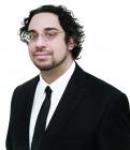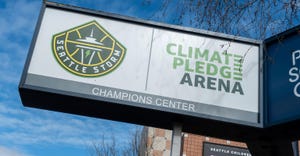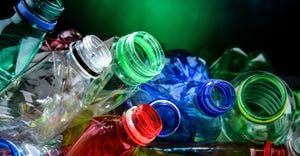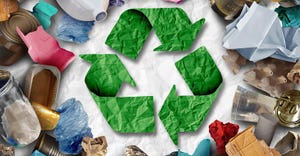The Solid Waste Association of North America’s biggest event, WASTECON, is well underway in Orlando, Fla. The event, now in its 53rd year, is marked by its education offerings and exhibition hall. Here are 12 takeaways from the first full day, which included a keynote address from New York City Sanitation Commissioner Kathryn Garcia.
Garcia explored New York’s ambitious plan to become a zero waste city by 2030. She started by giving the audience a scale of the challenge. New York is the largest municipal sanitation department in country and manages 10,500 tons of refuse and 2,000 tons of recyclables per day, excluding commercial waste. It’s fleet includes a whopping 2,000 trucks.
Further complicating matter is the fact that New York is a city made up of multiple islands—a detail people often forget. “Moving anything in and out of a city of islands is logistically complicated,” Garcia said. “There are tons of bottlenecks. That makes it expensive and challenging.”
Given the lack of nearby operating landfills, an “enormous amount of waste now leaves city by rail,” Garcia said. Overall, the city has taken 60,000 miles of long haul trucking off of the road by adopting waste-by-rail as a solution.
The city is exploring the possibility of moving to a single stream system. Garcia said the city believes it can improve its diversion rate by 20 percent by adopting single stream.
New York has been conducting a widely-publicized pilot with organics waste. But unlike other cities, where yard waste is a big component, New York is dealing largely with food waste. Currently the program is serving 144,600 households with 375,000 residents. It collected 11,702 tons of organic waste in 2014.
One thing the city has learned is that woody debris in the organics stream can be contamination. In addition to styrofoam ending up in bins, too many sticks and stones can be problems for processors.
New York'schools may be one of the first places to achieve zero waste. Garcia pointed out that school waste streams feature about 40 percent clean paper and cardboard, 40 percent food waste and food soiled paper, 10 percent metal, glass, plastic and cartons and 10 percent trash. Currently, 722 schools are served by organics collection. One school in Chinatown has already achieved a 96 percent diversion rate.
The city is just at the beginning of an effort to bring recycling to its public housing stock. So far, only 16 developments collect recycling with 292 facilities to go.
At the end of the day, “my goal is to get as much value out of materials as you can,” Garcia said. That includes maximizing recycling, waste-to-energy and diversion.
A panel featuring Frank Caponi, division engineer, Los Angles County Sanitation Districts; Niki Wuestenberg, director of air quality, Republic Services and Patrick Sullivan, senior vice president, SCS Engineers, had the unenviable task of outlining the implications of the current status of air and greenhouse gas regulations affecting landfills. The bottom line is that despite the EPA having a set of proposed guidelines in place, there remains a lack of clarity of around what will be included in the final rules and how that will affect landfill operations. Importantly, the EPA will publish the proposed rules soon, which will put in motion a roughly 13-month process before the regulations are finalized. "At the end of the day they can develop a final version … without the industry being able to review the final language,” Wuestenberg said. “That creates uncertainty on what the final rules will say. We don't want to end up in a situation where we provided no comment and the EPA goes into a direction we did not expect."
Debbie Hackman, solid waste technical advisor, with the Indiana Rural Community Assistance Program, led a session to help solid waste professionals learn to organize their thoughts and arguments for public meetings and deal with the prevailing NIMBY sentiments that often face solid waste projects.
Deb Frye, national technical director, solid waste facilities with HDR Inc., outlined programs, training sessions and standard procedures used in the railroad industry as potential examples for how the solid waste industry could improve safety for its workers.
About the Author(s)
You May Also Like




